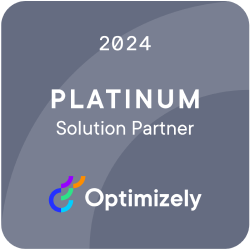Blend has a new CMS partner! Check out all the details on our newest supported platform.
Moving from Custom to Episerver
A “forklift” from custom to Episerver, all while keeping the business of Builder Finance up and running smoothly and efficiently.
Client
Forklifts: not just for construction anymore.
When you think of a “new website,” you often think of what you see. A new design. New content and shiny new banner images. Maybe a new login screen and a better integration with the database.
But sometimes, a new website isn’t visible at all. Sometimes, it’s supposed to be completely silent.
This was the case when we started working with Builder Finance, a division of First Financial Bank, dedicated to providing lending services to builders and developers. We weren’t building a new site, but instead inserting a new structure underneath an existing design and functionality.
This is what’s called a content management system (CMS) forklift, where the goal is to do everything possible to leave the public-facing site untouched while completely rehauling the mechanics of the site itself. Sometimes, this means taking an existing CMS and doing a massive upgrade — or even a complete change in CMS itself — while maintaining the content model and external look.
In the case of Builder Finance, this meant taking a homebrew development site and integrating a deeply complex content management tool like Episerver (now Optimizely).
Forklifts: what are they?
According to our own Deane Barker’s definition in his book, Web Content Management, a forklift is (new window)...
A type of integration project where an existing CMS is swapped for a new CMS with minimal other changes. The forklift project often strives to be transparent to the visitors of the website and is only concerned with the underlying CMS platform. So-named because the website is "lifted" up and a new CMS is swapped in "underneath" it.
In short, nothing on the website should change … at least to those who are visiting the site. On our side, though — the developers, the site editors, and those who need to poke around in the content management system — everything might change.
For Builder Finance, this meant we needed to focus on:
- Integration of the existing content database — making sure the content on the site still connected to the correct links and content types.
- Integration of any existing data entry points — especially since Builder Finance includes a multi-part loan estimator.
- Updates to the main design for accessibility needs — on the surface, these are patches and fixes that allow anyone, regardless of ability, to view the site with ease.
All backed by a rigid system of deployment and testing environments so that the site didn’t experience extensive downtime during the switchover.
It’s a lot of work, and with any luck … you see none of it.
Lowering the payload.
And then, just like that, the forklift is complete. The design works as expected, and while it seems like it might be the easiest possible job, it’s anything but.
In practice, removing design, content, and other public-facing implementation items also removes most of the wiggle room you might otherwise have with a from-scratch project. There are fewer chances to adjust the design to fit the content model, or for allowances within the content management system. To do a forklift well, there has to be a deeper-than-usual understanding of how every piece will fit together, and how even the most basic structural differences between the old CMS and new CMS may cause a major rift throughout the site.
If building a new website is like designing and constructing a new building, performing a forklift is like gutting a historic home and retrofitting within modern standards. If everything goes our way, site visitors will never knew we were in there, outside of a hopeful uptick in efficiency and site speed. But, like Builder Finance and countless other forklift clients have found out, there’s a lot that can change by swapping out for a new engine: savings in editorial costs, better accessibility, and, long-term, a more manageable content management solution.
And a little more piece of mind, which is exactly how we like every forklift project to end: even if you never see a thing.
Optimizely
Partners since 2008, Optimizely brings your project a best-in-class digital experience, backed by Blend’s years of experience.

Partners since 2008.
Blend has been working with Optimizely and Episerver since 2008, and was named North American Partner of the Year in 2009.

2024 Platinum Solution Partner.
Blend is a Platinum Solution Partner with four Optimizely certified developers on staff.
Setting you up for success.
Blend's history and experience developing custom Optimizely and Episerver solutions equips us to provide top-shelf co-development with your organization's existing development team.
Related work.
View CMS migration projects similar to this one.
A Forklift Toward a New System
Moving a site from Ektron to Episerver (now Optimizely) while still maintaining clarity and consistency.
200+ Sites, All Customized and Accessible
One project, one major redesign, over 200 websites: how to use little updates to make big changes.

